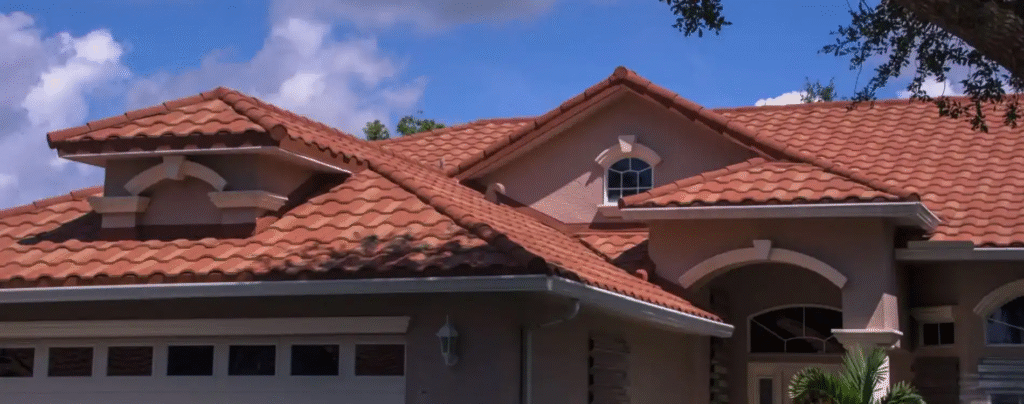Your roof is like that quiet, reliable friend who never complains — until one day they finally crack. For years, it keeps the rain, heat, wind, and the odd possum infestation out. Then, all of a sudden, you find a brown water stain on the ceiling, a dodgy draft, or worse… a slow and steady drip onto your favorite armchair.
The better news? Most roof issues can be detected before they cost you a small fortune — if you know what to look for.

The Tell-Tale Signs Your Roof Needs Attention
Let’s start with the basics. If your roof could talk, here’s how it might say “Help me!”
1. Discolouration on the Ceiling or Walls
That faint brown ring on your plasterboard? It’s not a coffee spill from the upstairs neighbour. It’s water. Even a pinhole leak can travel metres before it shows up inside your home.
2. Loose or Missing Shingles/Tiles
Tiles and shingles can slip, crack, or vanish entirely after heavy wind. Missing pieces leave your roof vulnerable to leaks, mould, and structural damage.
3. Sagging Sections
Roofs are meant to be straight and sturdy. If you see a dip or sag, it often means water damage to the timber structure beneath.
4. Rust on Metal Roofing
For homes with corrugated iron or Colorbond, rust patches — especially around screws or seams — can quickly spread.
5. Moss, Lichen, and Other Growths
It might look quaint in a storybook village, but on your roof, moss acts like a sponge, holding moisture against the surface.
Why Timing Is Everything
Roof problems never remain still. That small leak now might be a collapsed ceiling a month later. Water damage also invites pests, causes mould, and might undermine your home’s insulation.
Imagine your roof as an automobile engine. Disregarding the oil light doesn’t make the issue go away — it only makes the eventual fix more costly.
Regional Roof Challenges: Hobart vs Other Areas
Hobart’s roofs face different stresses than, say, Sydney’s Inner West or Brisbane’s bayside. The combination of cool winters, sudden storms, and salty coastal air means roof repairs in Hobart often deal with:
- Moisture damage from frequent rainfall and frost
- Salt corrosion for homes near the water
- Wind lift during strong gusts, which can dislodge tiles or panels
Compare that to somewhere like Sydney’s Inner West, where heritage homes often have slate roofs and strict renovation guidelines. Or the Gold Coast, where intense sun and humidity are the main enemies.
Local climate and building style dictate not just the type of materials used, but also the kinds of inspections and maintenance needed. That’s why speaking with experienced roofers in Hobart can help you understand specific risks before they escalate.
DIY Checks You Can Do Safely
I’ll stress this part: climbing on your own roof without the right gear and experience is risky. Falls from even a single storey can cause serious injury. That said, there are safe ways to keep tabs on your roof’s health:
- Binocular check from the ground after heavy rain or wind
- Look inside the roof cavity for signs of daylight, damp insulation, or musty smells
- Clear gutters from a sturdy ladder to prevent water backup
If you spot anything suspicious, call in a professional for a closer inspection.
How to Choose the Right Roofer
You don’t want the cheapest option; you want the one who’ll do the job right the first time. Here’s what to look for:
1. Local Experience
They’ll know the common issues in your area. Roofers in Hobart, for example, understand how to handle both high rainfall and coastal corrosion.
2. Licensing and Insurance
This protects both you and the tradesperson if something goes wrong.
3. References and Reviews
A roofer with happy customers will gladly provide examples of past work.
4. Clear, Written Quotes
This keeps costs transparent and reduces surprises.
Common Roof Problems and How They’re Fixed
Leaky Flashings
Flashings are thin metal strips around chimneys, skylights, and vents. When they fail, water sneaks in. Fixing them involves resealing or replacing the damaged sections.
Cracked Tiles
Tiles are replaced individually, though if there’s widespread damage, a partial re-roof might be needed.
Blocked Gutters
A quick clean-out can prevent water from overflowing into your roof cavity.
Rust Holes in Metal Roofing
Small holes can sometimes be patched; larger sections may require replacing entire sheets.
The Cost of Waiting
Putting off roof repairs is a bit like ignoring a toothache. Sure, you can delay the dentist visit for a while, but the longer you wait, the bigger (and more expensive) the fix becomes.
- A small flashing repair might cost a couple of hundred dollars.
- Replacing water-damaged rafters can easily climb into the thousands.
- And if mould gets into your insulation, you’re looking at a full replacement and possible health issues.
How Often Should You Inspect Your Roof?
Experts recommend at least a visual check twice a year — ideally in spring and autumn. Add an extra inspection after major storms. This helps catch problems early and keeps repair costs manageable.
A Cautionary Tale
A friend of mine in Sandy Bay ignored a small drip for months. “It’s just a little water,” he said. By the time he called a roofer, the timber beams were rotten, the ceiling sagged, and the repair bill could have paid for a holiday in Europe. Moral of the story: your roof will never fix itself.
Final Thoughts
Your roof is your home’s first defence against the elements. Whether you’re in Hobart, Brisbane, or anywhere in between, the principles are the same:
- Keep an eye out for warning signs.
- Act quickly on small problems.
- Work with experienced, local tradespeople who understand your climate and building style.
A little attention now can save you a lot of trouble — and money — later. So grab those binoculars, take a walk around the block, and give your roof the respect it deserves.

